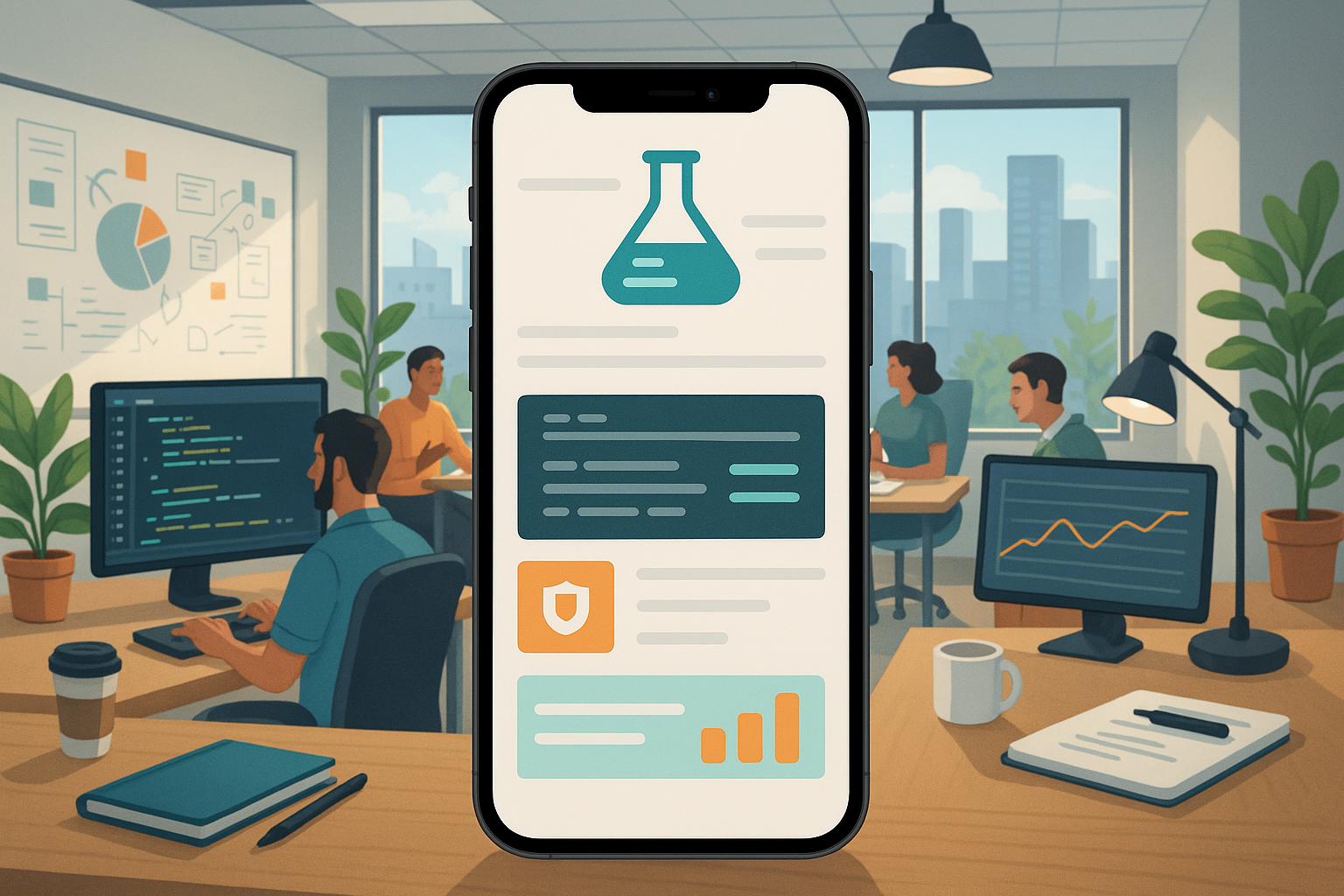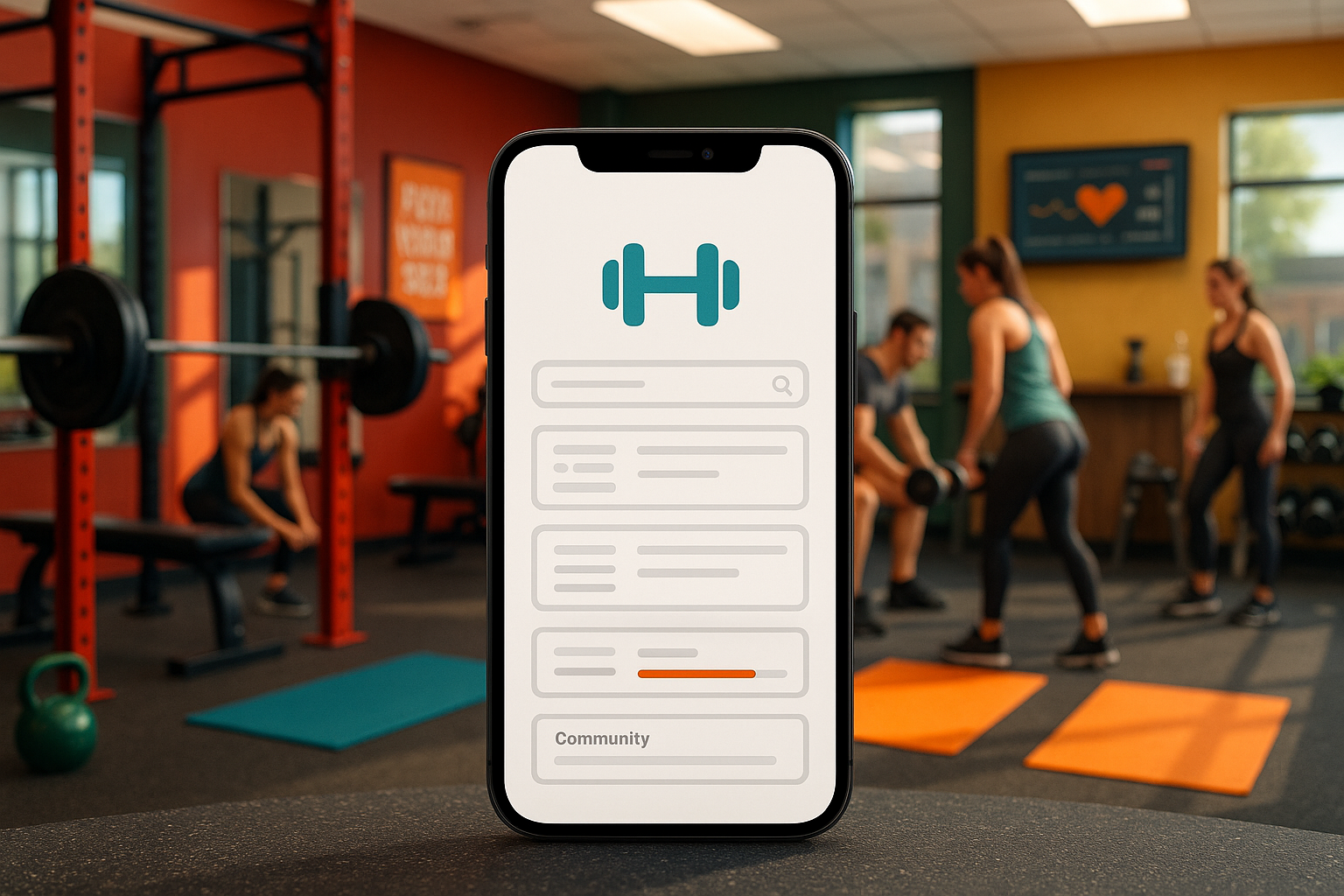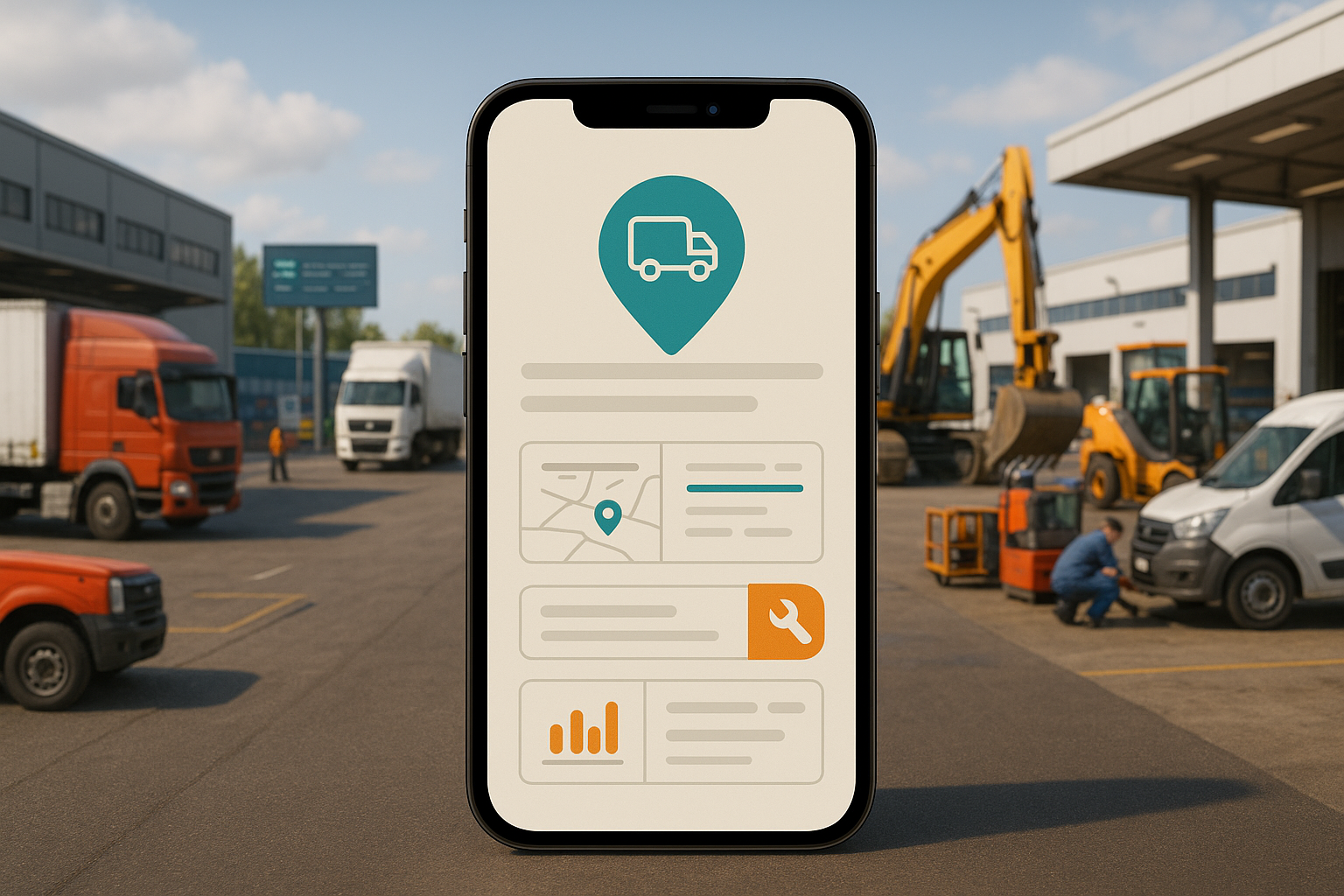Introduction
Flask is one of the most popular web frameworks in the Python ecosystem, celebrated for its simplicity and flexibility. It empowers developers to build everything from simple APIs to complex, data-driven web applications. However, this flexibility comes with a hidden cost: complexity. Developing a robust, secure, and scalable Flask application in-house is fraught with challenges. Teams often grapple with security vulnerabilities, performance bottlenecks, and the steep learning curve required to master the framework’s unopinionated nature. This is especially true when integrating a Flask backend with a native mobile application, a process that introduces a whole new layer of technical hurdles.
If you’re considering Flask for your next project, or if you’re struggling to scale your existing Flask application, you’ve come to the right place. This comprehensive guide will walk you through the world of Flask app development. We will explore what a Flask application is, detail the significant reasons why in-house development can be so difficult, analyze the costs involved, and introduce the top development companies that can help you succeed.
At MetaCTO, we are a top US AI-powered app development firm with over 20 years of experience turning ambitious ideas into successful mobile products. We have guided over 120 projects to launch, helping our clients raise over $40 million in funding. We understand the power of a well-architected Flask backend, and more importantly, we are experts in seamlessly integrating it with high-performance mobile apps. This article will provide the crucial information you need to make informed decisions and show you how partnering with an expert team like ours can be the key to unlocking your product’s full potential.
What is a Flask App?
At its core, a Flask application is a web application or service built using Flask, a lightweight web framework written in Python. Flask is often described as a “microframework.” This doesn’t mean it’s lacking in power, but rather that it is intentionally minimal. Unlike larger, more opinionated frameworks like Django, Flask doesn’t require specific tools or libraries to operate. It provides the essential tools for getting a web server up and running, but leaves the choice of other components—like database layers, form validation, or authentication systems—entirely to the developer.
This philosophy of simplicity and minimalism is what makes Flask so appealing. It avoids unnecessary overhead, which contributes to its speed and efficiency. Developers are not forced into a rigid structure; instead, they have complete control over the components used in their application, allowing them to build highly customized solutions tailored to their specific needs. This flexibility makes Flask an ideal choice for both beginners who want to learn the fundamentals of web development and experienced developers who need to build specialized, high-performance applications.
Core Features and Philosophy
Flask is built on a foundation of several key features that facilitate rapid and effective development:
- Built-In Development Server: Flask comes with a simple web server that is perfect for local development. It allows developers to run their application on their machine, facilitating quick testing and debugging cycles without the need to configure a full-scale production server.
- Jinja2 Template Engine: For applications that serve web pages, Flask uses the powerful Jinja2 template engine. This allows developers to create base HTML templates and dynamically generate pages by passing data from the Python backend to the frontend. It helps separate logic from presentation, leading to cleaner and more maintainable code.
- RESTful Request Dispatching: Flask is exceptionally well-suited for creating APIs (Application Programming Interfaces). Its routing system makes it straightforward to map specific URLs to the Python functions that handle them, which is the core principle behind RESTful request dispatching. This simplicity has made Flask a go-to choice for building the backend services that power mobile apps and single-page web applications.
- Unit Testing Support: Quality assurance is critical, and Flask provides robust support for unit testing. The framework’s structure makes it easy to write tests for different parts of an application, ensuring that code is reliable and functions as expected.
- Extensive Community and Ecosystem: While Flask’s core is minimal, it is supported by a vast ecosystem of extensions and a vibrant community. Need to connect to a database? You can easily integrate libraries like SQLAlchemy. Building a REST API? The Flask-RESTful extension provides powerful tools. This extensive support ensures developers have access to countless tutorials, resources, and pre-built components to accelerate development.
In essence, a Flask app embodies the principles of freedom and control. It is a versatile and powerful tool that allows developers to build a wide range of applications, from simple APIs and portfolio sites to full-fledged web applications with complex functionalities like machine learning integration or real-time data visualization.
Reasons It Is Difficult to Develop a Flask App In-House
While Flask’s flexibility is one of its greatest strengths, it is also the source of its greatest challenges, especially for in-house teams. The unopinionated nature of the framework means that developers are responsible for making critical architectural decisions, and a lack of experience can lead to significant long-term problems. Here are some of the most common difficulties teams face when developing a Flask application without expert guidance.
Security and Authentication
Security is not an add-on; it must be baked into an application from the ground up. Inexperienced Flask developers often inadvertently introduce severe security flaws.
- Input Validation: A primary challenge is ensuring that all user input is properly validated and sanitized. Failure to do so opens the door to common attacks like SQL injection, where malicious actors can manipulate your database, and Cross-site Scripting (XSS), where they can inject malicious scripts into your website.
- Authentication and Authorization: Implementing secure authentication and authorization is a complex task. Developers must choose and correctly implement mechanisms like JWT tokens or OAuth to ensure that only authorized users can access sensitive data. Libraries like Flask-Login or Flask-Bcrypt can help, but configuring them securely requires a deep understanding of web security principles.
- Error Handling: Striking the right balance with error messages is tricky. Messages should be informative enough for debugging but not so detailed that they expose sensitive information about the application’s architecture to potential attackers.
Scalability and Performance Optimization
Flask is fast and lightweight, making it great for small projects and prototypes. However, scaling a Flask application to handle high traffic and growing complexity is a significant engineering challenge.
- Performance Bottlenecks: As a project grows, teams often encounter performance issues. One of the most common challenges is identifying and resolving performance bottlenecks, which could be anything from slow database queries to inefficient code. This requires profiling tools and deep expertise in performance optimization.
- Database Scalability: The database is often the first component to struggle under a heavy load. Developers face challenges with managing database connections efficiently and optimizing queries to improve performance. As traffic increases, scaling the database itself becomes a major hurdle.
- Concurrency and Asynchronous Tasks: Handling a high number of concurrent requests and managing long-running, asynchronous tasks (like sending emails or processing large files) are major challenges. Without a proper architecture, these tasks can block the server and degrade the user experience.
- Load Balancing and High Availability: Ensuring an application remains available and responsive during traffic spikes requires implementing load balancing and high availability strategies. These are complex infrastructure challenges that go beyond simple Flask development.
Developer Experience and Code Management
The quality of a Flask application is directly tied to the experience of the developers building it. A lack of familiarity with the framework’s best practices can lead to a host of problems.
- Lack of Experience: Developers new to Flask, especially those coming from more structured frameworks like Django, may struggle with its unconventional, minimalist structure. This can lead to poor architectural choices that are difficult to correct later.
- Code Organization: In a large codebase, keeping routes organized and maintaining a proper separation of concerns is a constant battle. Without a disciplined approach, the project can quickly become a tangled mess that is difficult to maintain or extend.
- Dependency Management: Flask’s reliance on external libraries means that managing dependencies and ensuring version compatibility can become a headache, especially as the number of dependencies grows.
- Testing and Documentation: Ensuring proper test coverage is a challenge, particularly when dealing with complex business logic or external APIs. Furthermore, documentation is often overlooked by busy development teams, making it difficult for new members to get up to speed and increasing long-term maintenance costs.
- Deployment: Moving an application from a local development environment to a production server can be a daunting task. It involves configuring web servers, application servers, databases, and more—a process that is rife with potential pitfalls.
Types of Applications Built with Flask
Flask’s versatility allows it to power an incredibly diverse range of applications. Its microframework nature means it can be as simple or as complex as a project requires. Here are some of the most common types of applications where Flask excels.
APIs and Microservices
This is arguably Flask’s most popular use case. Its simplicity, minimal overhead, and built-in RESTful request dispatching make it the perfect tool for building APIs.
- Backend for Mobile and Web Apps: Modern applications often separate the frontend (what the user sees) from the backend (the server-side logic and data). Flask is ideal for creating the backend API that serves data to a mobile app (iOS/Android) or a single-page web application (built with React, Vue, etc.).
- Microservices Architecture: As applications grow, many companies adopt a microservices architecture, breaking a large, monolithic application into a collection of smaller, independent services. Flask’s lightweight design makes it an excellent choice for building these individual microservices. This approach simplifies complex systems, making them easier to develop, deploy, and scale.
Small to Medium-Sized Web Applications
While it can power complex systems, Flask is also perfectly suited for more traditional, server-rendered web applications.
- Blogs and Content Management Systems (CMS): A simple blog or CMS is a classic Flask project. Using the Jinja2 template engine, developers can quickly build dynamic websites that display content from a database.
- Portfolio Sites: For developers, designers, and other creatives, a custom portfolio site is a great way to showcase their work. Flask allows for the creation of unique, fast-loading sites without the bloat of larger platforms.
- E-commerce Platforms: While a large-scale e-commerce site might require a more feature-rich framework, Flask can comfortably power small to medium-sized online stores, especially when integrated with payment gateways and other third-party services.
Data-Driven Dashboards and Visualizations
Flask can serve as the web layer for powerful data science and analytics applications. By integrating with libraries from the Python data science ecosystem, developers can create compelling, interactive dashboards.
- Real-Time Monitoring: Flask can be integrated with libraries like Plotly, Dash, or Matplotlib to create real-time dashboards for monitoring business metrics, system performance, or any other data stream. This is useful for internal business intelligence tools.
- Machine Learning Model Deployment: A common challenge in machine learning is deploying a trained model so that it can make predictions on new data. Flask provides a straightforward way to wrap a machine learning model in a web API. This allows other applications to send data to the model and receive predictions via a simple web request, making it a cornerstone of AI software development.
Cost Estimate for Developing a Flask App
One of the first questions any stakeholder will ask is, “How much will it cost?” While the Flask framework itself is open-source and free to use, the real investment lies in the development, integration, and ongoing maintenance of the application. Determining a single price for a Flask project is impossible, as the cost is not a fixed number but a spectrum influenced by a multitude of variables.
Key Factors Influencing Cost
Understanding these factors will help you budget more accurately for your Flask development project.
| Factor | Description | Impact on Cost |
|---|---|---|
| Project Complexity | The scope and features of the application. A simple, static website with a few pages will be significantly cheaper than a complex, feature-rich app with user authentication, complex databases, and third-party API integrations. | High |
| Developer Experience | The skill level of the developers. Junior developers charge less, but senior developers bring efficiency, better architectural decisions, and the ability to solve complex problems. Specialized skills (e.g., in AWS, security, or machine learning) also command a premium. | High |
| Hiring Model | How you source your talent. Building an in-house team is often the most expensive option, while hiring freelancers can seem cheaper but carries risks. Partnering with a development agency often provides a balance of cost, expertise, and reliability. | High |
| Geographic Location | Where your developers are located. Developers in high-cost-of-living areas like North America or Western Europe typically charge significantly more than those in other talent hubs. | Medium |
| Timeline | The urgency of the project. Rush projects with tight deadlines usually come with a higher price tag to compensate for the need to allocate resources quickly and potentially work longer hours. | Medium |
| Scope of Services | Whether the contract includes services beyond pure coding. Including comprehensive testing, deployment, and ongoing maintenance in the scope will increase the overall cost but ensures a higher quality, more reliable final product. | Medium |
Hiring Models and Cost Implications
Your choice of how to hire your development team will have the largest impact on your budget.
- In-House Team: This is a “pretty expensive solution.” It involves not only salaries and benefits but also significant overhead costs for recruitment, office space, and equipment. While it gives you maximum control, it is the least flexible and most capital-intensive option.
- Freelancers: Hiring a freelance developer can seem like a cost-effective choice, especially for smaller projects. However, managing freelancers can be time-consuming, and there’s a risk of inconsistent quality or a lack of long-term commitment. Finding a freelancer with the right blend of Flask expertise, security knowledge, and scaling experience can be a challenge.
- Development Agency / IT Outstaffing: Partnering with a dedicated development team or agency often proves to be the most cost-effective and reliable option. Agencies have higher overhead than freelancers but provide access to a vetted team of experts, project management, and quality assurance. Partnering with an agency in a global talent hub like Ukraine can be significantly more affordable. For example, some companies have seen up to a 60% cost reduction by hiring a dedicated team through an agency compared to hiring locally.
As a benchmark, as of January 2022, the average hourly rate for Python developers in the United States ranged from $30 to $150, depending heavily on experience and specialization. A simple project might take 100-200 hours, while a complex application could easily exceed 1,000 hours, illustrating the wide range of potential costs.
Top Flask App Development Companies
Choosing the right development partner is the most critical decision you will make. An expert partner can help you navigate the complexities of Flask development, avoid common pitfalls, and deliver a high-quality product on time and on budget.
1. MetaCTO
At MetaCTO, we specialize in building, growing, and monetizing mobile applications. With over two decades of app development experience and more than 120 successful projects launched, we are experts in creating high-performance, scalable digital products. While we are technology-agnostic, we recognize the power of a well-architected Flask backend, especially when it serves as the foundation for a world-class mobile app.
The Challenge of Mobile Integration
A common and costly mistake companies make is underestimating the difficulty of integrating a Flask backend with a native mobile app. A Flask application built primarily for the web is often incompatible with a mobile client.
- Useless Code: Flask code that uses features like
render_template,flash, andredirectis designed to generate HTML pages for a web browser. This code is completely useless in the context of a native mobile app, which is agnostic to Jinja2 and other web-templating engines. - Required Refactoring: A monolithic Flask web application, where the frontend and backend are tightly coupled, must be significantly refactored to support a mobile app. The backend logic needs to be separated and exposed through a clean, well-documented API that both the web and mobile clients can use. This refactoring process can be a significant and expensive development effort if not planned from the start.
- Costly Rebuilds: If an existing Flask application was not built with an API-first model, the cost of integrating it with a mobile app can be prohibitive. A full rebuild is often the most time-consuming and expensive approach.
How We Help
As experts in custom mobile app development, we have deep expertise in solving this exact problem. We know how to architect Flask backends that are built for mobile from day one. We can also rescue existing projects that are struggling with this challenge. We guide our clients toward efficient solutions, helping them avoid expensive rebuilds by architecting a robust API layer or, in some cases, leveraging more efficient webview-based packaging methods that can preserve the existing codebase while delivering a native-like experience. Our goal is to ensure your technology stack is a powerful asset, not a liability.
2. BairesDev
BairesDev is another leading technology solutions company known for its rigorous talent acquisition process, hiring only the top 1% of tech talent. They have been working with Flask since its introduction in 2010 and have over a decade of hands-on experience delivering reliable solutions for web applications, mobile apps, and server-side challenges.
BairesDev brings deep technical expertise and a results-driven approach to every project. Their services are highly customizable, offering engagement models like staff augmentation and full outsourcing to fit different client needs. Their Flask development services include:
- Custom APIs and Microservices: They leverage Flask’s modular architecture to design and build custom, secure, and scalable APIs and microservices tailored to specific business needs.
- Security Integration: Security is integral to their process. They have expertise in integrating security extensions like Flask-Security-Too and Flask-JWT-Extended and conduct penetration tests to secure applications.
- Performance Optimization: Their skilled developers optimize applications by implementing caching tools like Flask-Caching and Redis, streamlining database queries, and ensuring seamless performance under load.
- Full-Cycle Development: They offer end-to-end development, from building prototypes and web apps to providing ongoing maintenance and support, ensuring projects run smoothly from conception to deployment and beyond.
BairesDev’s commitment to quality and their ability to assemble expert teams quickly make them a trusted partner for companies looking to leverage Flask for efficient and scalable solutions.
Conclusion
Flask is a remarkably powerful and flexible framework that can serve as the backbone for a wide variety of digital products. Its simplicity and minimalist philosophy give developers the freedom to build highly customized and performant applications. However, this same freedom presents significant challenges. Successfully navigating the complexities of security, scalability, performance optimization, and mobile integration requires deep expertise and a disciplined engineering approach—a level of experience that can be difficult and expensive to build and maintain in-house.
Throughout this guide, we have explored the core concepts of Flask, delved into the common difficulties of its development, broken down the factors that influence cost, and highlighted top development partners. We’ve paid special attention to the critical challenge of integrating a Flask backend with a native mobile application, a common stumbling block where expert guidance is invaluable.
Choosing the right technology is only half the battle. Choosing the right partner to build it is what truly determines success. If you are ready to build a powerful application or need to integrate a robust Flask backend into your product, don’t leave it to chance.
Talk with a Flask expert at MetaCTO today. Let us help you build your app the right way, from day one.






